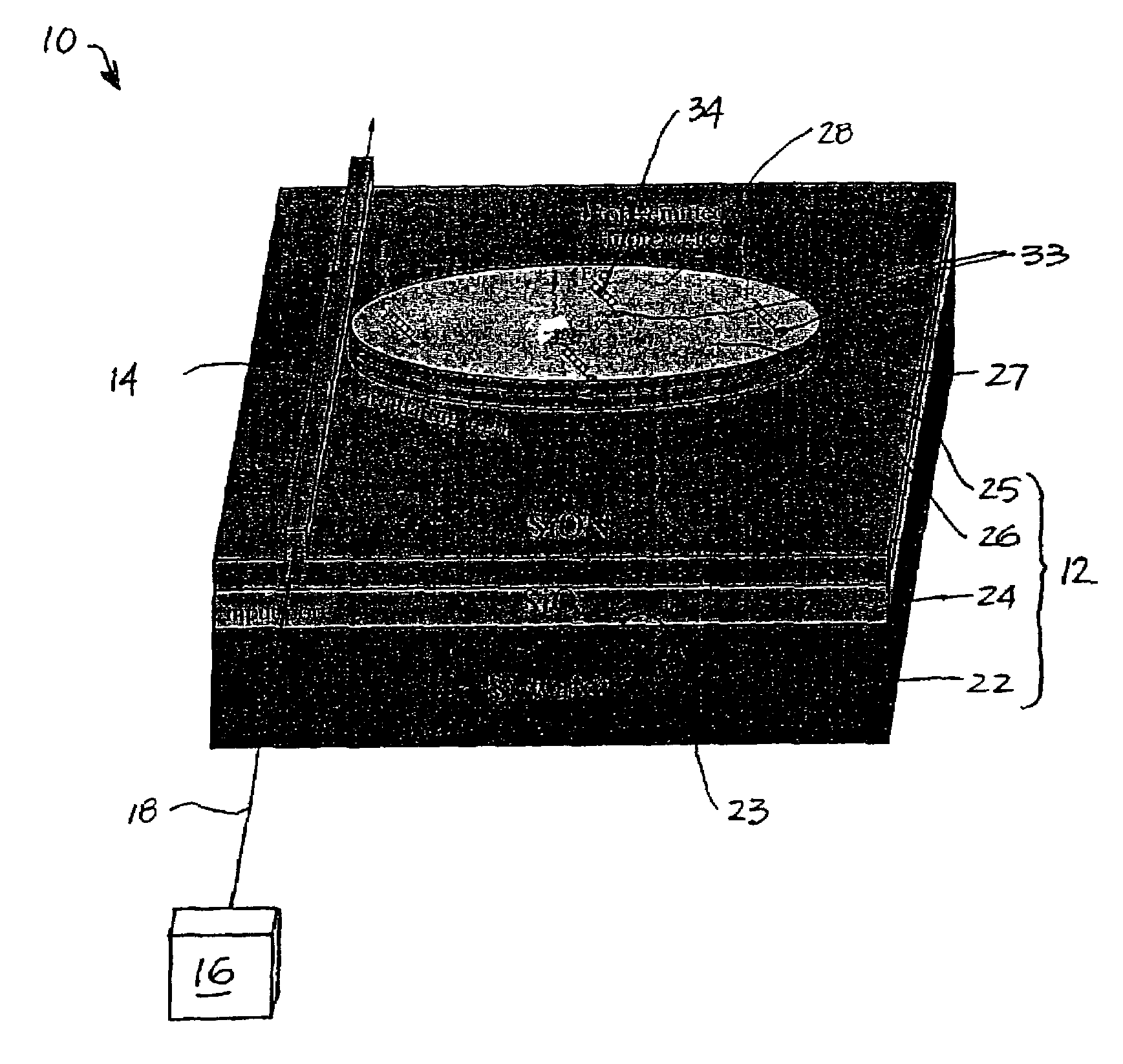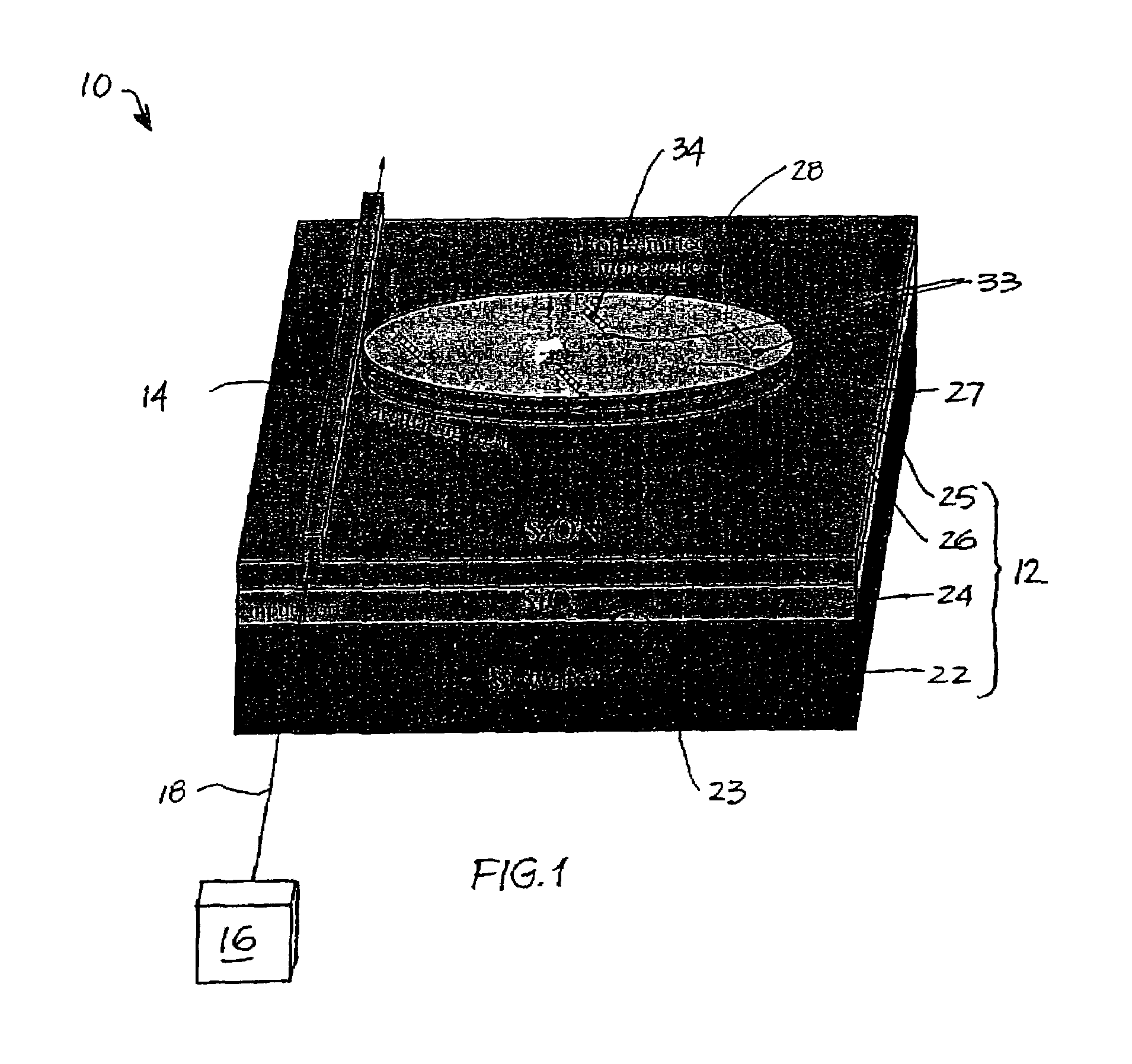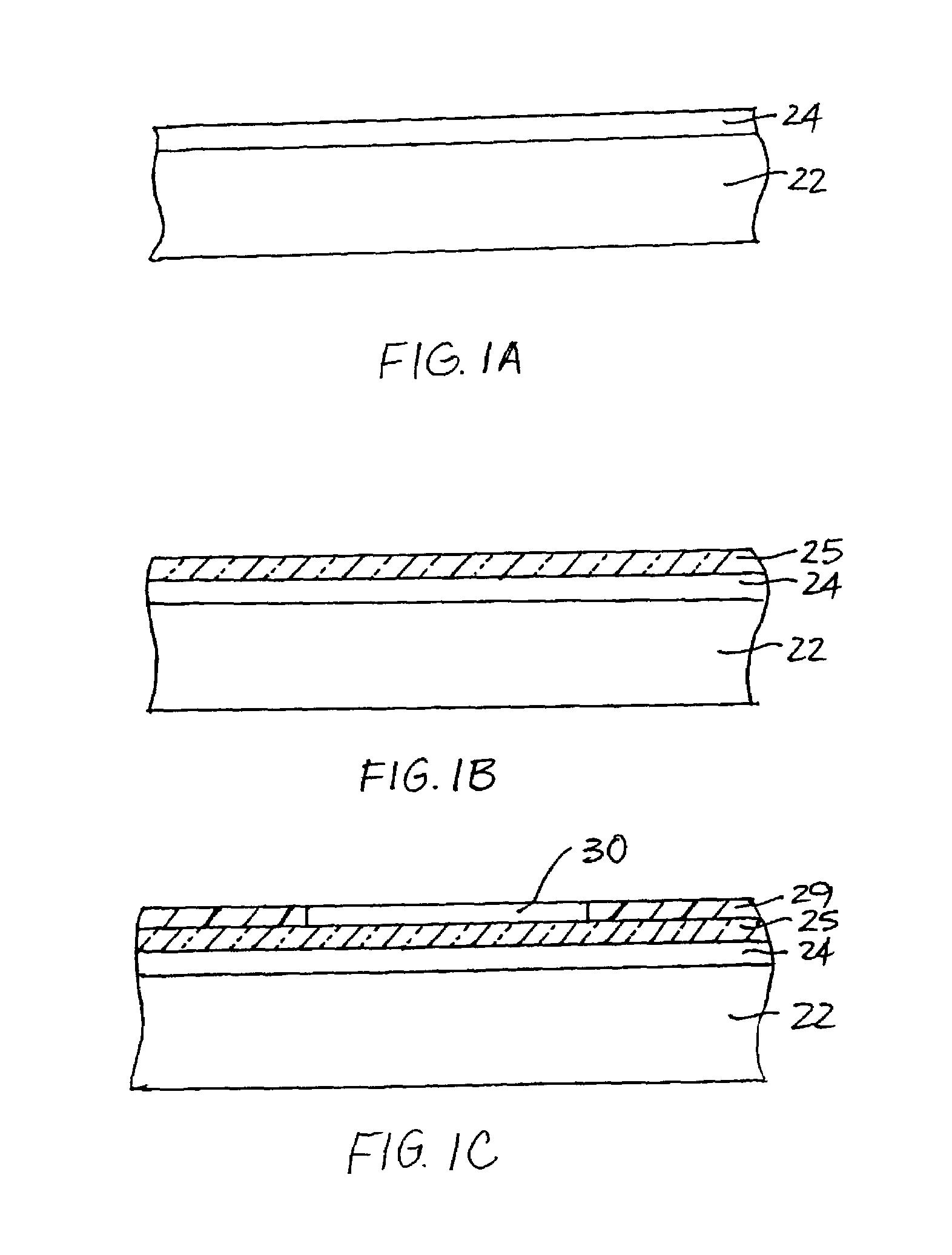Resonant optical cavities for high-sensitivity high-throughput biological sensors and methods
- Summary
- Abstract
- Description
- Claims
- Application Information
AI Technical Summary
Benefits of technology
Problems solved by technology
Method used
Image
Examples
example 1
Development of Optical Microcavities
[0118]In determining the mass sensitivity of resonant optical cavities incorporating teachings of the present invention, calibration curves indicating the sensitivity per unit area of these resonant optical cavities may be generated and compared with the sensitivities of known mass sensing apparatus, such as the BIAcore surface-plasmon resonance apparatus.
[0119]Studies are initially performed using large diameter (about 25-50 μm) cylindrical cavities. There are many design parameters that affect the cavity FSR, Q, and mode structure. This parameter space is explored initially using FDTD simulation.
[0120]When optimized design parameters are obtained, the cylindrical cavities are fabricated. Using a laser diode with tunability over the absorption band of the target fluorescent tag and a high-sensitivity photoreceiver, the cavity free-spectral range (FSR) and Q of the cylindrical cavities are measured and compared with the results obtained through FD...
example 2
Nucleic Acid Probe Assay
[0122]After proper device characterization, nucleic acid assay studies are performed. Nucleic acid probes are chosen because they stand to benefit the most from the high throughput capability of the microfabricated array embodiment of biosensor disclosed previously herein. The T3 RNA polymerase promotor site is the model system for nucleic acid hybridization. These synthetics mimic single-stranded oligonucleotides amplified from human DNA using polymerase chain reaction (PCR) and, while T3 has minimal clinical relevance, the T3 hybridization process has been well characterized and serves as an ideal baseline for initial studies, which can be readily extrapolated to assays with clinical relevance.
[0123]Capture oligonucleotides (T3 for the baseline studies) are immobilized relative to the substantially planar surface of a SiON cylindrical cavity by coating the substantially planar surface with neutravidin using a simple puddle coating technique and immobilizing...
example 3
Comparison between Singly Resonant and Doubly Resonant Optical Cavities
[0126]Two approaches may be used to demonstrate enhanced sensitivity detection of doubly resonant optical cavities over singly resonant cavities: 1) operation at reduced temperatures, and 2) utilization of dyes that are not strongly broadened.
[0127]In the first case, the fluorescence yield of Cy5 is measured versus temperature down to 77° K. As the temperature is lowered, the number of occupied phonon levels is reduced, causing narrowing of the inhomogeneous linewidth.
[0128]The second approach uses a different class of dyes. For example, B-phycoerythrin has an emission peak at 575 nm with spectral width of about 20 nm. The broad absorption peak is centered about 546 nm (which can still be accessed efficiently by a doubled Nd:YAG laser at 532 nm), such that the expected enhancement factor is about 2, assuming that double resonance is obtained at 575 nm and 532 nm with FSR 42 nm and that all the fluorescence couple...
PUM
 Login to View More
Login to View More Abstract
Description
Claims
Application Information
 Login to View More
Login to View More - R&D
- Intellectual Property
- Life Sciences
- Materials
- Tech Scout
- Unparalleled Data Quality
- Higher Quality Content
- 60% Fewer Hallucinations
Browse by: Latest US Patents, China's latest patents, Technical Efficacy Thesaurus, Application Domain, Technology Topic, Popular Technical Reports.
© 2025 PatSnap. All rights reserved.Legal|Privacy policy|Modern Slavery Act Transparency Statement|Sitemap|About US| Contact US: help@patsnap.com



